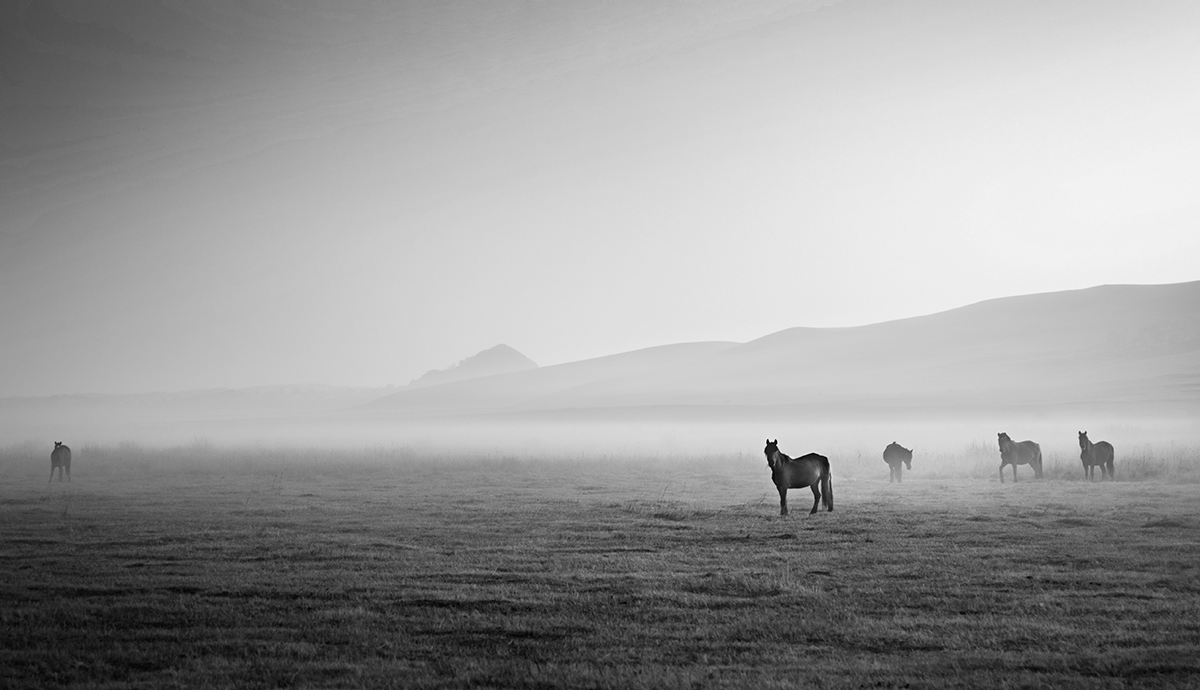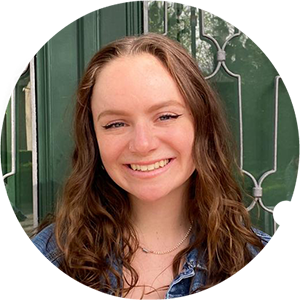Although translation has a ubiquitous presence in the modern world, the ethical considerations and mechanics of translation often occur behind the scenes, lending a mysteriousness to the act of translation and often positioning the translator as an invisible part of the process. If readers pause to consider the translator at all, they may not give much credit to a translator’s work. Readers might view the translator’s role as traitorous, due to the translator’s often unchecked power to make or change meaning, leading to questions about where their linguistic and cultural alliances lie. Putting suspicions aside, translators serve the function of constructing cross-cultural bridges, as they are responsible for connecting two worlds through language. Understood through a different metaphor, translation is a puzzle, and the translator’s responsibility is to gather together the various cultural and linguistic pieces in order to create a cohesive image.
In this essay and the following one, Spanish literature professor Heather Jerónimo and University of Northern Iowa Spanish student Emily Robinson, discuss the many considerations and challenges involved when their Introduction to Translation class worked together to create a translation of the poem “Canción de jinete,” or, “Song of the Rider,” by Spanish poet and playwright Federico García Lorca. Translation may seem particularly daunting when it comes to poetry, requiring an elaboration and demystification of the process so that readers may understand the many decisions involved in producing a translation. While various critics and translators bemoan the difficulties (or, as some assert, the impossibilities) of translating poetry, this literary genre continues to cross linguistic borders with the help of translators who either dare to defy the inherent challenges of translating poetry or are blissfully unaware of the scope of such a project at the outset. Although it poses many challenges, poetry in translation offers great benefits to readers through exposure to texts that connect people through the expression of universal emotions, personal narratives, and experiences that transcend cultural differences.
The translation of, “Canción de jinete,” was a combined endeavor by eleven students and the professor in a class that practiced different types of translations between English and Spanish throughout the semester. The diverse linguistic backgrounds of the students created a rich collaborative space where second-language learners of Spanish, and Spanish heritage speakers crafted a translation of the poem based on their personal knowledge and varied linguistic experiences. While students had previously workshopped translations in small groups, this was the first time we worked as an entire class to produce a translation. We referred to Robert Bly’s, “The Eight Stages of Translation,” published in 1982, as a loose guideline; although we did not always agree with Bly’s advice, his article provided us with a framework to outline our work and a starting point for discussions of how we viewed our role as translators. Throughout this experience, students were able to develop their own voices and values as translators, while navigating the ethical considerations associated with translation. Before we began our creative process of translation, we examined English translations of the poem by Stephen Spender and J.L. Gili, A.W. Tüting, and Ursula Rehn Wolfman. Even though, “Canción de jinete,” has been translated to English several times, the class saw the value in creating our translation, as no two individuals will translate the same text in exactly the same way. This particular poem was well-suited for our collaborative translation for several reasons. While the poem is short and manageable as a group translation, it is full of meaning to unpack; it offered us the opportunity to consider rhyme and rhythm in a way that other genres of texts could not; and while Federico García Lorca is well-known, English translations of this poem vary significantly.
The poem “Canción de jinete” recounts the rider’s journey on horseback through Andalusia, the southern region of Spain where García Lorca spent his upbringing. His ride to Córdoba is a metaphor for the journey of life. As readers follow the rider’s futile attempt to reach his destination, they observe the rider’s gradual understanding that this will be his last journey, bearing witness to his mounting emotional intensity as death approaches. Through this metaphor, García Lorca highlights the tragic theme of the inevitability of death and the hopelessness of such a reality, as in the poem he states he will never reach Córdoba.
Federico García Lorca is one of the most well-known Spanish poets and playwrights of the twentieth century. Born near Granada in 1898, his childhood was influenced by his mother’s love for music and education, as well as the guitars and horses of the Andalusian region of southern Spain, all of which infused his poetry with a musical rhythm. García Lorca often wrote about death, love, oppression, and marginalization. He was killed near the beginning of the Spanish Civil War in 1936, targeted in part due to his communist leanings and homosexuality. Salient themes that emerge from the work of García Lorca, such as a condemnation of oppression and marginalization, prove the importance of translating his poetry to allow English-speaking audiences access to his narrative, and ultimately, access to a different lens by which to view the world.
With a basic understanding of García Lorca’s life and literary work, our first task as a translating group was to create a literal version of the poem without concerning ourselves with nuance, as Bly suggests in his first stage. The goal was to simply put words on the page, which could later be manipulated. As a group, we completed a word-for-word translation, where we added the first word that was suggested to the shared Google Doc that housed our translation, which was projected for everyone to see. This was done without discussing verb tenses or the subtle differences in meaning of particular adjectives. Once we had the literal translation, we then completed a word mining activity for several keywords in the poem, a strategy that Dr. Catherine Nelson (published translator and Spanish professor at Nebraska Wesleyan University) had previously explained when she spoke to our class. Word mining involves using a thesaurus to write down as many synonyms for a word as possible, in order to have a selection of words from which to mix and match during the translation process. For example, one repeated word in the poem is “jaca,” which can translate to “mare,” “small horse,” or “pony.” We made a list of all possible translations for “jaca” that we could find, leaving the decision for later as to whether we would use one word consistently or choose different words for “jaca” in different stanzas of the poem. Another example of word mining stems from the word “camino.” Our list of synonyms were “road,” “path,” “way,” “journey,” and “trip.” We selected the word “way” in the line “Even if I knew the way” because the author is indicating he knows the specific route or direction to Córdoba, the ultimate destination in the poem. However, in the penultimate stanza of the poem, we translated “¡Ay qué camino tan largo!” to “Oh, what a long journey!” We opted for the word, “journey,” as in this stanza, García Lorca is alluding to the actual experience of traveling to his destination of Córdoba. These examples demonstrate the complex decision-making processes that are involved in choosing the correct vocabulary choice, as words across languages differ in connotation and meaning.
According to Bly, the second stage of translating poetry involves a discussion of meaning. This is meant to be a collaborative process, where the translator brings in friends to ask for their opinions, facilitating a conversation about details of the poem the translator herself might not have noticed and discussing multiple meanings for words. We were already working collaboratively, but we took this opportunity to step back and consider the layers of meaning in the poem. On a superficial level, the poem describes the journey of a rider who is attempting to reach Córdoba, although he knows he will never arrive. On a symbolic level, the poem describes life as a journey that ends with death as the ubiquitous and unavoidable destination. Bly also asks that translators take the time to understand the feelings and emotions expressed in the poem and ask themselves if they can reproduce them in the translation. As a class, we spoke about the universality of death, hope, and despair. This was an important step in our process, as finding the meaning within literature, specifically poetry, results in different interpretations, which in turn shapes the framework in which the work will be translated. Thus, it can be argued that the translator holds a great amount of power in the trajectory of the translation purely based on their interpretation, as an individual’s connection to the work will vary.
As a group, we spent a lot of time focused on the symbolism of the moon and the horse, the two most-repeated images in the poem that greatly impacted our interpretation of the work. The two adjectives García Lorca used to describe the moon were “grande” (big) and “roja” (red). We discussed several variations on the adjectives big and red. While we kept big as a literal translation, we translated “red moon” into “blood moon,” playing with alliteration and symmetry in the line (“Black mare, blood moon”), choosing “blood” for its ability to evoke both the color red and the image of death. The original work did not state “luna de sangre” (blood moon), providing an example of how the translator in some situations must take risks in order to fully convey the intended meaning of the author. Conversely, it could be argued that this change adds an additional layer to the poem, thus changing the perception of the phrase. Thus, some find that these risks and changes lead the translator into becoming the new authors of the work, as these artistic decisions are made by the translator rather than the original author. “Jaca” was another word that we paused on, for good reason. In each of the translations that we referenced, “jaca” was translated differently (little horse, steed, and pony). We chose the word “mare” because it is an English word that refers to a female horse, just like “jaca.” It also allowed us to maintain alliteration in the line “Black mare, big moon.”
The title of the poem was another point of spirited discussion. A.W. Tüting translated the title to, “Horseman’s Song,” while Ursula Rehn Wolfman and Stephen Spender and J.L. Gili all chose, “The Rider’s Song” for their translations. While these are perfectly acceptable translations, we decided to retain the Spanish structure of the phrase (“Song of the Rider”), as Spanish does not use the convention of apostrophes to indicate possession. “Song of the Rider” is perfectly acceptable in English and may sound more literary, but we also hoped that this title would retain a nod to the original Spanish, a slight hint of “otherness” to remind readers that they are perusing a translation of a text that did not originate from their language or culture. The inclusion of the original culture in the translation encourages a sense of positive uncomfortability, a sensation that is inevitable when two cultures collide. The erasure of this positive uncomfortability could prevent a powerful opportunity for the development of cultural competence and understanding.
The translation of the poem, “Canción de jinete,” provides a key example of the intricacy of such a task, as translators must be equipped with the creative skills and strategic linguistic knowledge to accurately and artistically reflect the intentions of the author. This project also proves how influential the craft of translation is, as translators are responsible in providing a bridge to readers to cross-cultural works, thus promoting the essential skill of cultural understanding. ⬤
Bibliography
Bly, Robert. “The Eight Stages of Translation.” The Kenyon Review, vol. 4, no. 2, 1982, pp. 68-89.
Rehn Wolfman, Ursula. “The Horseman’s Song.” “Federico García Lorca—Manuel de Falla—The Andalusian Heritage in Poetry, Music and Art.” Interlude, 2012. https://interlude.hk/federico-garcia-lorca-manuel-de-falla-the-andalusia.... Accessed 21 April 2023.
Spender, Stephen and J.L. Gili. “Rider’s Song.” “Poetry in Translation (CLXV): ‘Federico Garcia Lorca’, Spain, (1989-1936)—‘Cântec călare’, ‘Canción de jinete’, ‘Rider’s Song’.” Centre for Romanian Studies, 2013. https://www.romanianstudies.org/2013/02/04/poetry-in-translation-clxv-fe.... Accessed 21 April 2023.
Tüting, A. W. “Horseman’s Song.” “Federico García-Lorca (1898-1936).” 2000. http://www.fa-kuan.muc.de/GARCIA.RXML#jinete. Accessed 21 April 2023.
Special thanks to the Fall 2021 section of Introduction to Translation at UNI (Perla Arreguin, Emely Duron Portillo, Wendy Martin, Esme Najera, Steph Nees, Elise Parker, Stephany Perez Fernandez, Desi Shelton, Jessica Vrioni, and Sam Zimmerman) for their collaborative translation work throughout the semester, especially on “Canción de jinete.”
Read “Canción de jinete” via ProQuest
Discover More on the Mechanics of “Canción de jinete”




